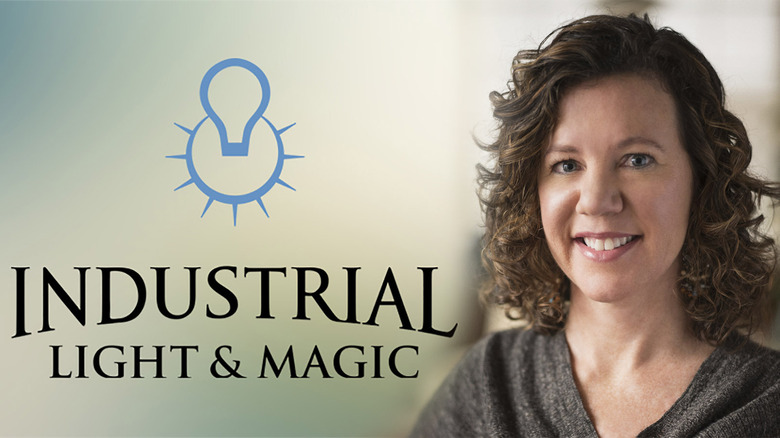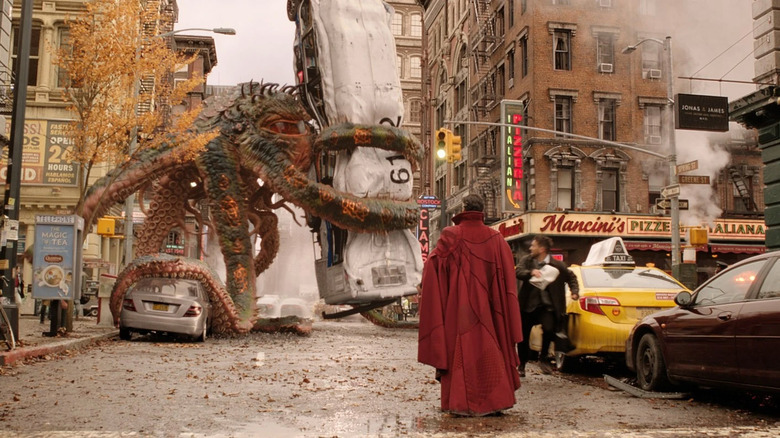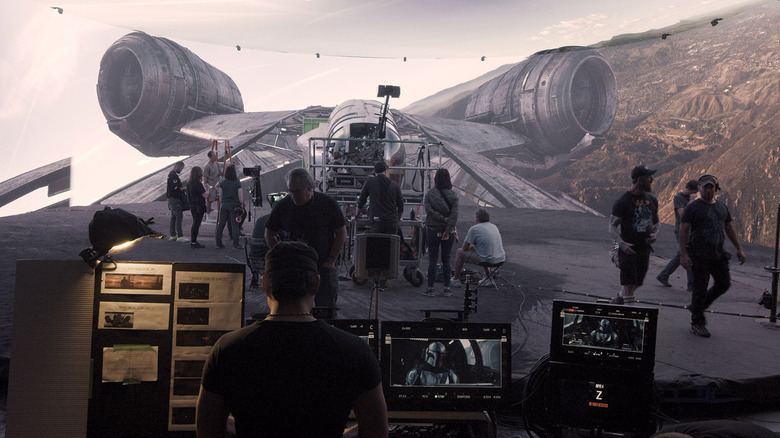Industrial Light & Magic's SVP Janet Lewin On The Evolution Of StageCraft, VFX Challenges & More [Interview]
Disney+ recently released "Light & Magic," a six-part documentary series chronicling the rise of Industrial Light & Magic, the visual effects house created by George Lucas and the company that took us to a galaxy far, far away, welcomed us to "Jurassic Park," and took "E.T. The Extra-Terrestrial" to the skies.
ILM is the place where movie magic is made, and for years, the visual effects giant has been under the guidance of Senior Vice President and General Manager, Janet Lewin, who oversees all aspects of the visual effects and animation business for Lucasfilm and ILM. Lewin also oversees the company's much-buzzed about tool known as StageCraft, the virtual production technology that has been used on "The Mandalorian" and "The Batman."
Leading up to the release of "Light & Magic," we spoke with Lewin about the relationship between blockbuster filmmaking and VFX today, the struggles of VFX artists, and what has recently impressed her in the VFX world. Plus, we talk about the future of StageCraft and whether or not it's a tool that could end up being used excessively, similar to the boom of computer generated VFX that followed "Jurassic Park" and its amazing digital dinosaurs. Check out our full interview below.
'I think we all crave more authentic storytelling where visual effects is part of the scope and scale'
You've been at ILM for such a long time, so I was wondering if there was anything you were surprised to learn about the history of ILM or their early work on "Star Wars" and other projects?
I wouldn't say surprised. I would say inspired and reminded of the incredible talent and the risk taking, and the fun, and just sort of the breakneck speed that ILM needed to operate at, even way back then, to realize George's vision and take chances. But it was just a real honor and an inspiration to hear from so many people who felt like ILM stepped up and solved their problems as real filmmaking partners. I think that spirit continues today, but that was, I think for me, the greatest takeaway.
How do you feel about the relationship between blockbusters and visual effects today? Is there too much of a reliance on computer generated imagery that it acts as a crutch sometimes? What's your take on that?
I think that's true for some films, sure. I think that there's no one size fits all. Visual effects is a tool, and it can be used really, really well, and can be invisible or can just be in support of the story. And then there can be an over-reliance on it, absolutely. I think audiences have gotten pretty savvy to that approach to filmmaking. I think we all crave more authentic storytelling where visual effects is part of the scope and scale, but it's not taking away from or overemphasizing other aspects of the story.
'I think that visual effects tends to be a bit of a black box for a lot of filmmakers who don't see the artists who are laboring on their shots'
What do you feel like is the biggest challenge facing the visual effects industry as a whole right now?
I think it's the content boom and the pressure to produce high-quality work at a low cost in short time, that I think is an industrywide issue. I think that ILM tries our best. We try our best at ILM to create an environment where our artists are able to have some work-life balance and feel really engaged and appreciated on the projects. But I think that, as you were describing, the over-reliance on visual effects can result in some unfortunate outcomes in the industry at large. That's something that we're acutely aware of and trying to stay ahead of.
Yeah, because it feels like, at least recently, there has been somewhat of an outcry from artists who feel like the hours that they're putting in, the deadlines are so hard to meet because it's such a fast turnaround, and it's just a really difficult issue in general right now.
Yeah, absolutely, it is. And I don't think it's exclusive to visual effects. There's a talent compression everywhere. Unfortunately, I think that visual effects tends to be a bit of a black box for a lot of filmmakers who don't see the artists who are laboring on their shots. They just don't have as much access to the individuals, so it's really up to the visual effects studios to make sure that we have the right capacity and the right schedules, and manage our clients in a way that can make that sustainable for our artists. And we're not always successful, but I think that's something that we strive to do at ILM.
'Our work on ABBA Voyage is an example of a never-before-seen concert experience'
What are some of the most impressive visual effects you've seen recently? Are there any sequences or movies where you're just like, "Wow, I have no idea how they pulled that off," while you're watching?
Gosh. You know, because I do know how we execute the work at ILM, it's hard —
[Laughs] That's true. So maybe not that you literally don't know, but just what has impressed you a lot?
I will say that I love the artistry of "The Mandalorian" projects and the way that we're able to layer in so many different techniques to really have that nostalgic feel of the original "Star Wars" films. So that's something that works really well for me.
On the kind of innovation, never-before-seen, how did they do that aspect, our work on "ABBA Voyage" is an example of a never-before-seen concert experience, where we were able to bring to life the band ABBA in their prime. Actually, I was supposed to be in London this week seeing it, but I'm going to go in September. But I've seen some of the behind the scenes stuff and how we put it together, and it's mind-blowing. So I'm excited about those kinds of opportunities for us to get involved with innovation outside of our traditional mediums.
'It's not really the tool, it's the way the tool is used'
You brought up "The Mandalorian" and StageCraft technology. It has been extremely impressive, not just on "The Mandalorian," but now it's starting to be used on other big productions. Is there any concern this could result in another situation where you've opened up Pandora's Box with technology, similar to how "Jurassic Park" and its computer generated dinosaurs made waves in Hollywood and resulted in a rush of effects that maybe weren't on par with what you produced for "Jurassic Park?" Is there any concern StageCraft might become a tool that is overused in a way that's not as effective as you have made it?
Well, it's a great question. I can see where that could happen. There's a lot of interest and enthusiasm around virtual production, and now there are volumes and effects houses who are getting involved in providing these kinds of services. It's not really the tool, it's the way the tool is used. With computer graphics and an over-reliance on it, and the issue that people felt like it sort of cheapened the quality of the work, that could happen with virtual production. But all we can control at ILM is the work that we're doing, and I think that we have not only the best tools right now, the most production-hardened, but we have the most experience providing these services on set for a variety of different filmmakers.
We also have the craftspeople who are designing and creating the material and the environments, who are collaborating with the other heads of department and filmmakers to make sure that everyone understands what the trade-offs are for going the virtual production route, and when you're going to get in-camera finals. It's because a lot of it is an education for new filmmakers to understand what the paradigm shift needs to be in order for it to be successful for them. And because we have the experience, we can be really transparent and good partners and help our creatives and our filmmakers arrive at the right decisions for how to use the tool.
What's the next step of evolution for StageCraft? Is that something that you guys are addressing yet?
We address it every day. We are constantly innovating, making the tools easier to use, continuing to develop and evolve our proprietary tools, but also [investing] in Unreal and other off the shelf real-time renderers. We don't develop technology for technology's sake. Our mantra is "Story drives everything," and we look for creative problems to drive our innovation. Because we attract filmmakers who have incredible imaginations and ambitions like Jon Favreau, we're going to continue to let them help us innovate on their behalf, as opposed to trying to innovate in a vacuum and hope that we can solve a problem we don't know about yet.
"Light & Magic" is streaming now on Disney+.



